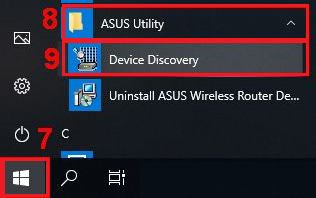

- #COMPUTER BUTTON SHORTCUTS WINDOWS 7#
- #COMPUTER BUTTON SHORTCUTS WINDOWS#
But for now, you can impress all your friends by knowing what each letter key does as a major Windows shortcut. If you add in all the special characters and meta keys, you’ll find there are hundreds of Windows key shortcuts to master. That’s not all the shortcuts in Windows- far from it. Ctrl+U: Underline text (Word), View source (browsers).Ctrl+T: Hanging indent (Word), New tab (browsers).Windows+D: Display (and hide) the desktop.

Windows+B: Focus on the first icon in the Taskbar system tray.
Ctrl+R: Align text right (Word), Reload page (browsers) At least seven of these shortcuts are new to Windows 11. Ctrl+J: Justify text (Word), Open downloads (browsers). Ctrl+H: Find and replace (Word), Open history (browsers). Ctrl+E: Center (Word), Focus on address bar (browsers). Ctrl+D: Change font (Word), Create bookmark (browsers) Windows 7 Keyboard Shortcuts Ease of Access Right Shift for eight seconds, Turn Filter Keys on and off Left Alt+Left Shift+PrtScn (or PrtScn), Turn High. Ctrl+B: Make bold (Word), Open bookmarks (browsers). In the cases where there isn’t a common use for the shortcut, we’ve listed its use in Microsoft Word (which many other text editing apps use as well) and in most web browsers. Of course, there’s also the famous Ctrl+Z/X/C/V shortcuts for undo, cut, copy, and paste commands that are universal across almost every app. Some of these Control key-based shortcuts vary by application, but there are some standard conventions that apply in many apps, such as Ctrl+B for making text bold and Ctrl+F for searching within an app. RELATED: Why Do Keyboards Have a Windows Key? Here's Where It Started The Control Key Shortcut Alphabet Windows+Z: Open Snap layouts (if a window is open). Windows+Y: Switch input between Windows Mixed Reality and desktop. Windows+X: Open the power user menu (like right-clicking Start button). Windows+W: Open (or close) the Widgets menu. Windows+V: Open clipboard history ( if enabled). Windows+U: Open accessibility settings in the Settings app. Windows+T: Cycle through and focus on taskbar application icons. Windows+S: Open Search menu (yep, there’s currently two of them) Frequently saving your files reduces the chance youll lose data if your computer freezes. Windows+R: Open the Run dialog (for running commands). Windows+P: Open Project menu (for switching display modes). Windows+O: Lock screen rotation (orientation). Windows+N: Open notification center and calendar. Windows+K: Open Cast in Quick Settings ( for Miracast). Windows+J: Set focus to a Windows tip (if on screen). Windows+H: Open voice typing (speech dictation). Windows+D: Display (and hide) the desktop. In the text box under Type the location of the item, type the following command and then click Next: In the next window, type a name for your new shortcut if you. Windows+B: Focus on the first icon in the Taskbar system tray To create a shutdown icon, right-click your Desktop, hover over New, and then select Shortcut. At least seven of these shortcuts are new to Windows 11. Some of these go as far back as Windows 95, but newer editions of Windows have changed a few over time. This will create a shortcut, here Ctrl + Alt + I.In Windows 11, Microsoft uses shortcuts performed with the Windows key as universal shortcuts that work across all apps and control basic Windows functions. Click that line and then click a letter on your keyboard, for example, I. 
You should see a line that says Shortcut Key: None. Open a new window in Incognito mode, Ctrl + Shift + n Jump to the next open tab Open the Chrome menu. Right-click the shortcut and select Properties. Chrome keyboard shortcuts Open a new window, Ctrl + n. However, you can also proceed with the shortcut sitting in the file location. To open an application's program folder in Windows 10, press the Windows key, search for it, then right-click the icon and select Open file location.įrom here, you can right-click the application again, select Create Shortcut from the context menu, and click Yes to place the shortcut on the desktop. You can use a desktop shortcut for the application, or you can find the root folder. Create Your Own Desktop Keyboard TrickĪre there folders or applications you need a lot? Why not create your own keyboard shortcut to quickly access these tools. Finally, press I to sign out, U to shut down, R to restart, H to hibernate, or S to sleep. It all starts with Windows + X to open the Quick Access Menu, followed by the U key to expand the Shut down or sign out menu. You can shut Windows down with a few button clicks.







 0 kommentar(er)
0 kommentar(er)
